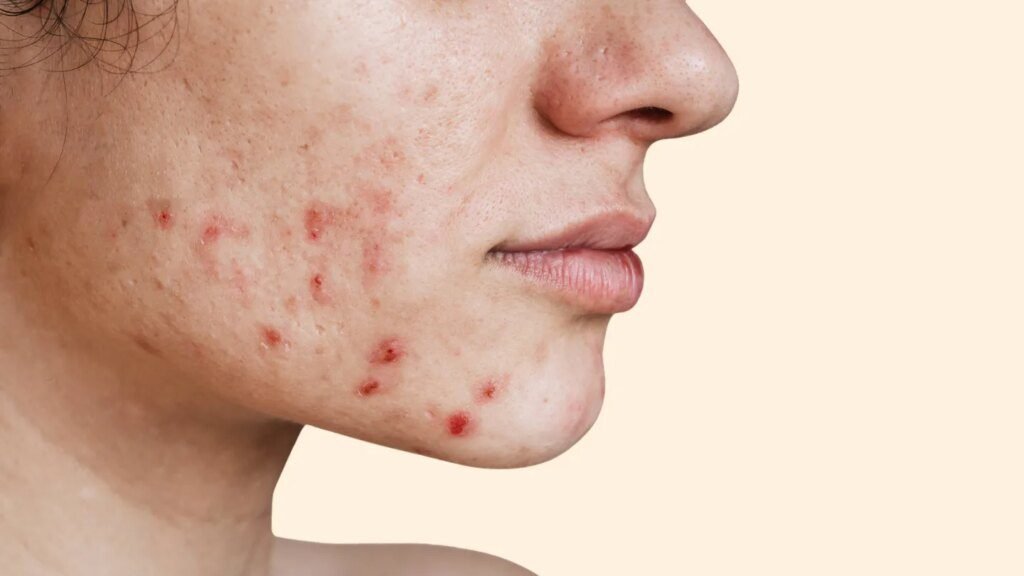Understanding Acne: What Your Breakouts Reveal About Your Skin Health
Acne can be an unwelcome visitor, but the location of your breakouts may hold clues to their underlying causes. Dermatologists emphasize that identifying the areas where blemishes occur can provide insights into the contributing factors and appropriate treatments. Here’s a detailed guide on what your acne might be telling you.
Forehead and Hairline: Product-Related Breakouts
Causes
Acne in the forehead and hairline regions is often linked to products used on the face or hair. Dermatologist Dr. Hollmig points out that applying certain facial and hair products close to your hairline can cause clogged pores.
Prevention and Treatment
- Switch to Oil-Free Products: Products containing oil can lead to breakouts.
- Maintain Hair Hygiene: Regularly wash your hair to minimize product buildup.
- Clean Accessories: Frequently wash items like headbands, hats, and helmets that come into contact with your skin.
Identifying and discontinuing the use of problematic products can significantly help in clearing these areas.
T-Zone: Forehead, Nose, and Chin
Nature of Breakouts
The T-zone, encompassing the forehead, nose, and chin, often sees the emergence of comedonal acne—characterized by whiteheads and blackheads caused by clogged pores filled with oil, bacteria, and dead skin cells.
Treatment Options
- Use Topical Retinoids: These treatments effectively unclog pores and reduce acne.
- Consider Salicylic Acid: This ingredient can help in exfoliating and keeping pores clear.
By targeting the T-zone with appropriate treatments, you can achieve better skin health.
Around the Mouth and Nose: Perioral Dermatitis
Misunderstood Condition
Bumps and redness around the mouth or the corners of the nose may be confused with ordinary acne but are likely signs of perioral dermatitis. This red rash can occur due to the use of irritating products, particularly toothpaste, or prolonged exposure to topical corticosteroids.
Recommended Treatments
- Oral Antibiotics: Can help clear severe cases.
- Gentle Skin Products: Opt for fragrance-free and non-irritating products to soothe the skin.
Understanding the differentiation between acne and perioral dermatitis is key to effective treatment.
Cheeks: Bacteria from Everyday Items
What to Consider
Acne on the cheeks may be due to the transfer of bacteria from daily items like pillowcases, makeup brushes, or cell phones. Research has shown a link between cheek acne and dirty phone screens.
Preventive Measures
- Regularly Clean Daily Items: Keep pillowcases and makeup brushes clean.
- Limit Phone Contact: Reduce the frequency with which your phone touches your face.
In some cases, what appears to be acne could be rosacea, a chronic inflammatory condition that requires dermatologist evaluation.
Jawline: Hormonal Influences
Understanding the Causes
Acne along the jawline is typically linked to hormonal fluctuations. Changes associated with menstruation, pregnancy, or puberty can lead to heightened oil production, which clogs pores.
Effective Treatments
- Topical and Oral Medications: Over-the-counter options and prescription treatments like tretinoin can be effective.
- Hormonal Treatments for Women: Options such as birth control pills or spironolactone may be beneficial for women suffering from hormonal acne.
Consulting a dermatologist is advisable for personalized treatment plans.
Back: Bacne and Its Triggers
Overview of Conditions
Although not facial, back acne (or bacne) can be just as troublesome and often results from similar issues—clogged skin from dirt, sweat, and oil.
Helpful Practices
- Post-Workout Hygiene: Shower immediately after exercising and change into clean clothes.
- Maintain Clean Linens: Use clean towels and sheets to minimize breakouts on the back.
If bacne persists for more than six to eight weeks, or if lesions are painful, consult a dermatologist for specialized treatment options.
Conclusion
Understanding the different forms and locations of acne can significantly aid in treating and preventing breakouts. Consult a dermatologist for a personalized evaluation and treatment plan tailored to your specific needs. By adhering to best practices and utilizing the right products, clearer skin is within reach.
For additional information on effective treatments and skin health tips, visit American Academy of Dermatology.


